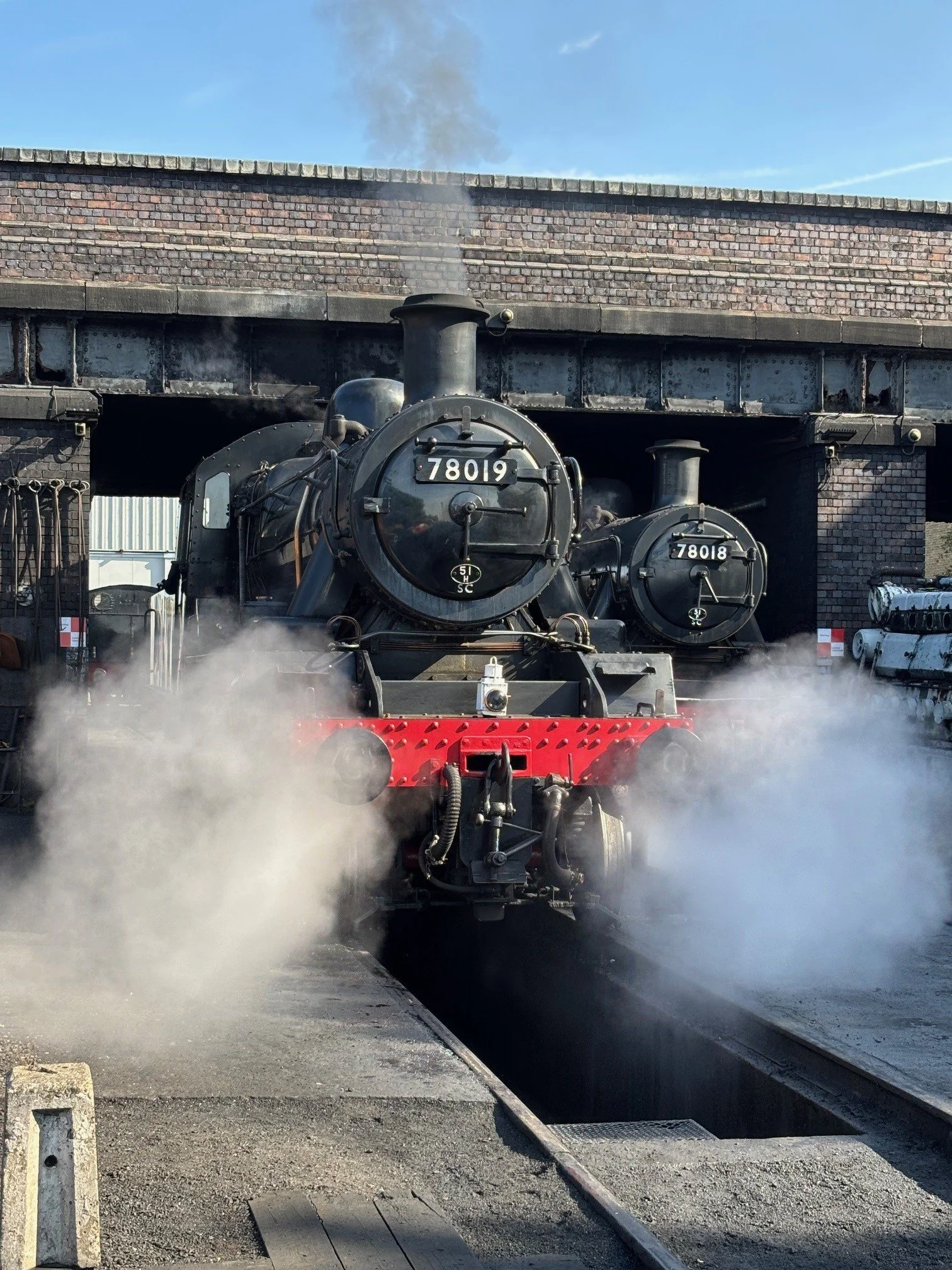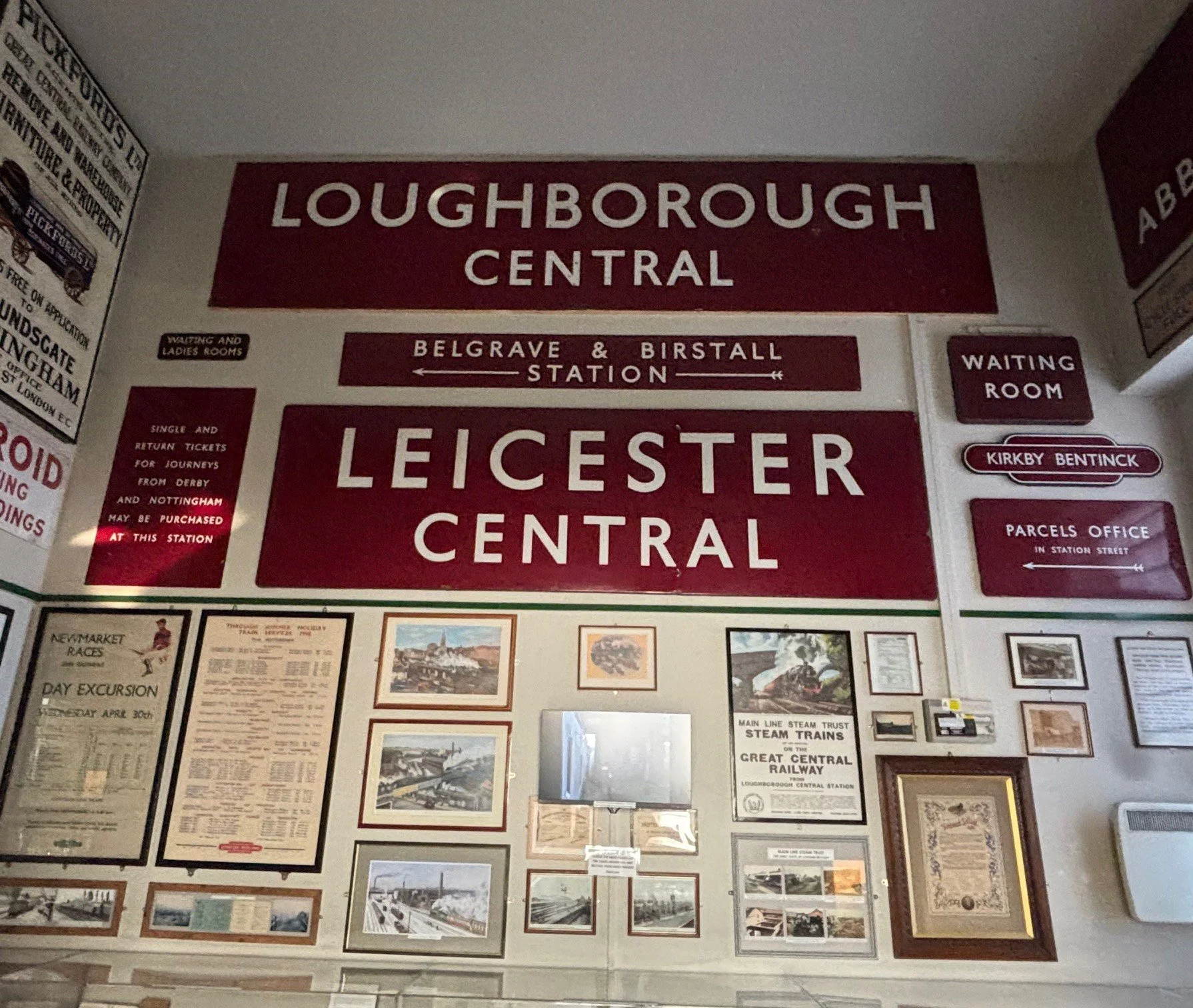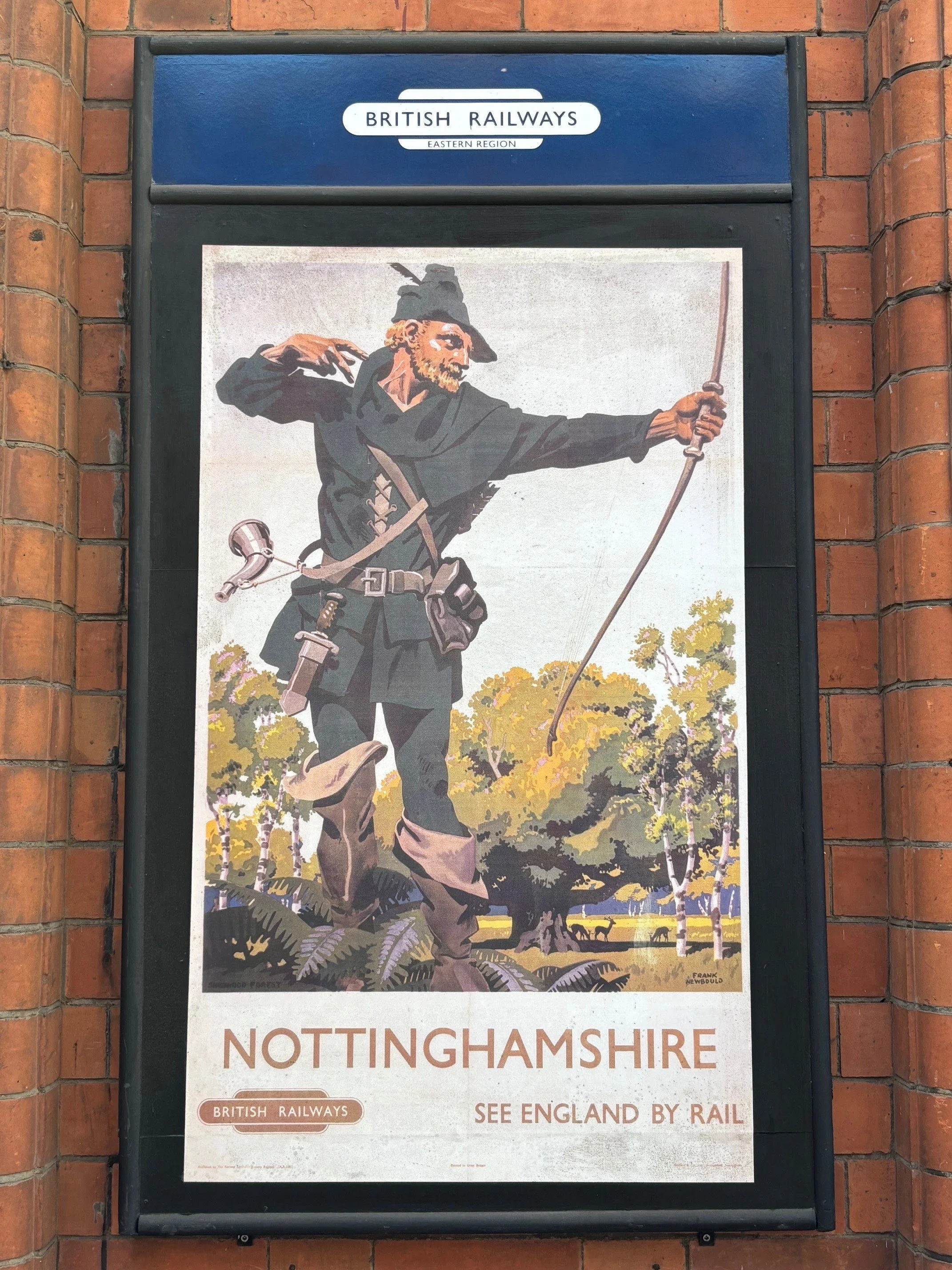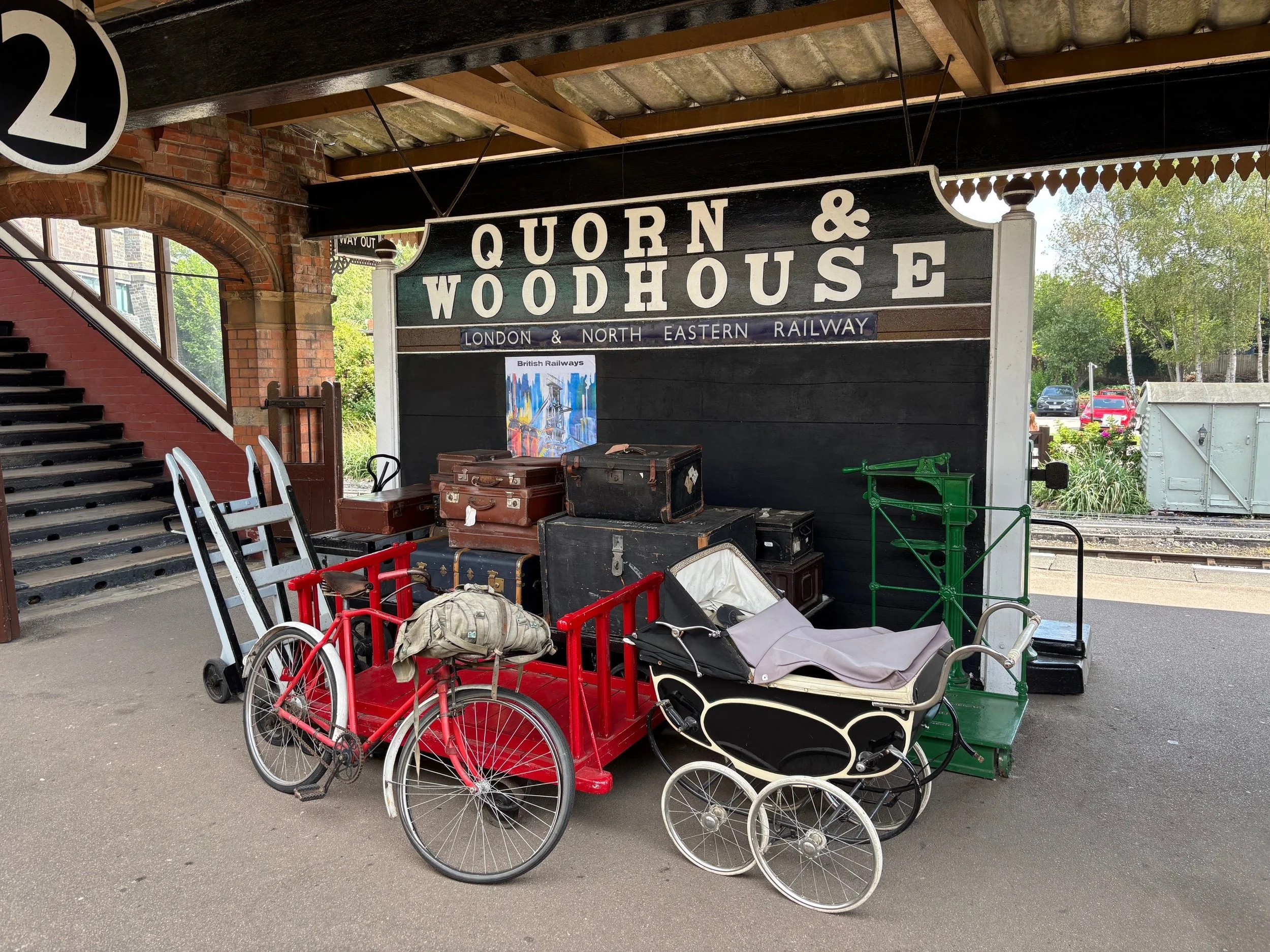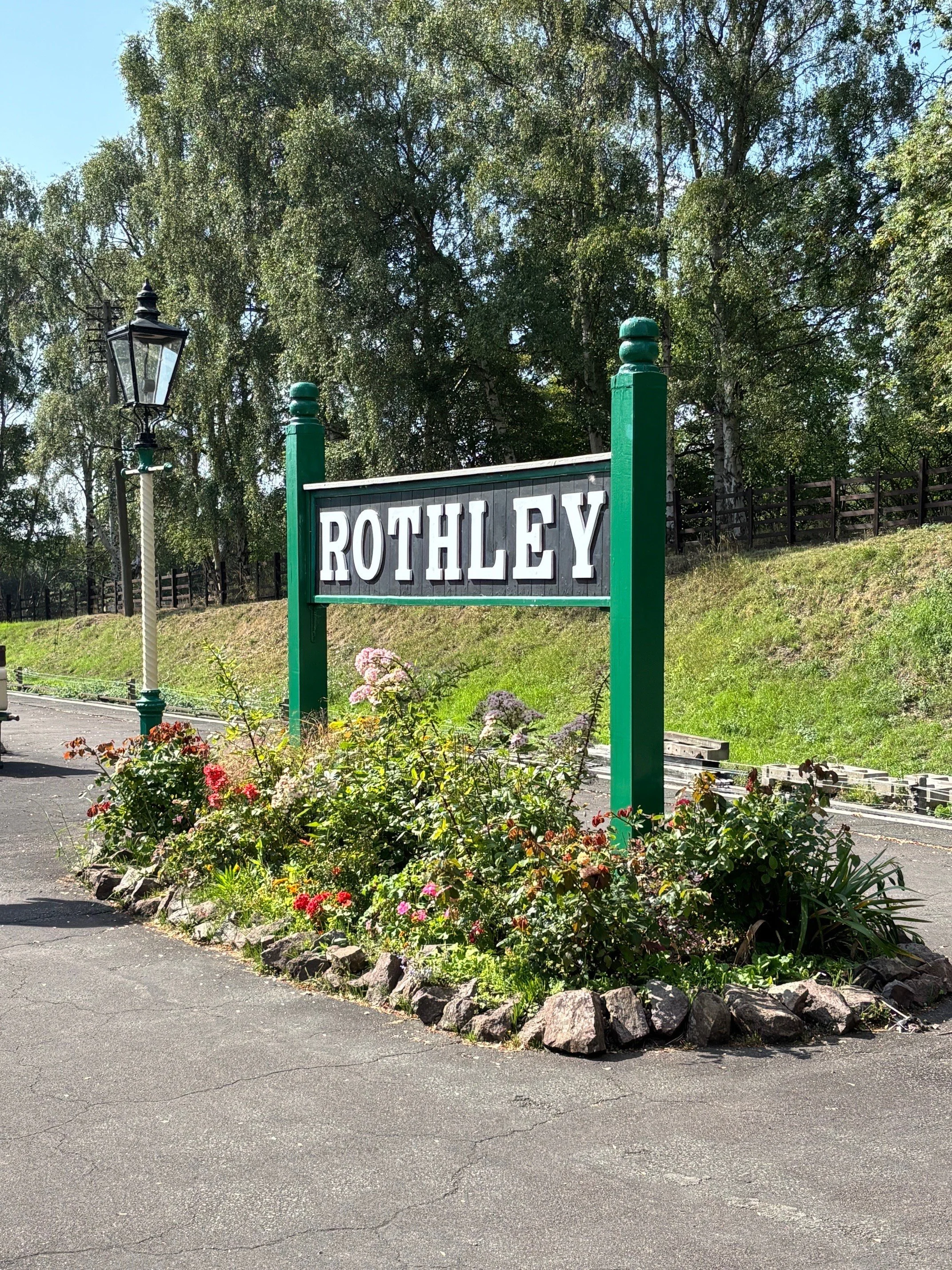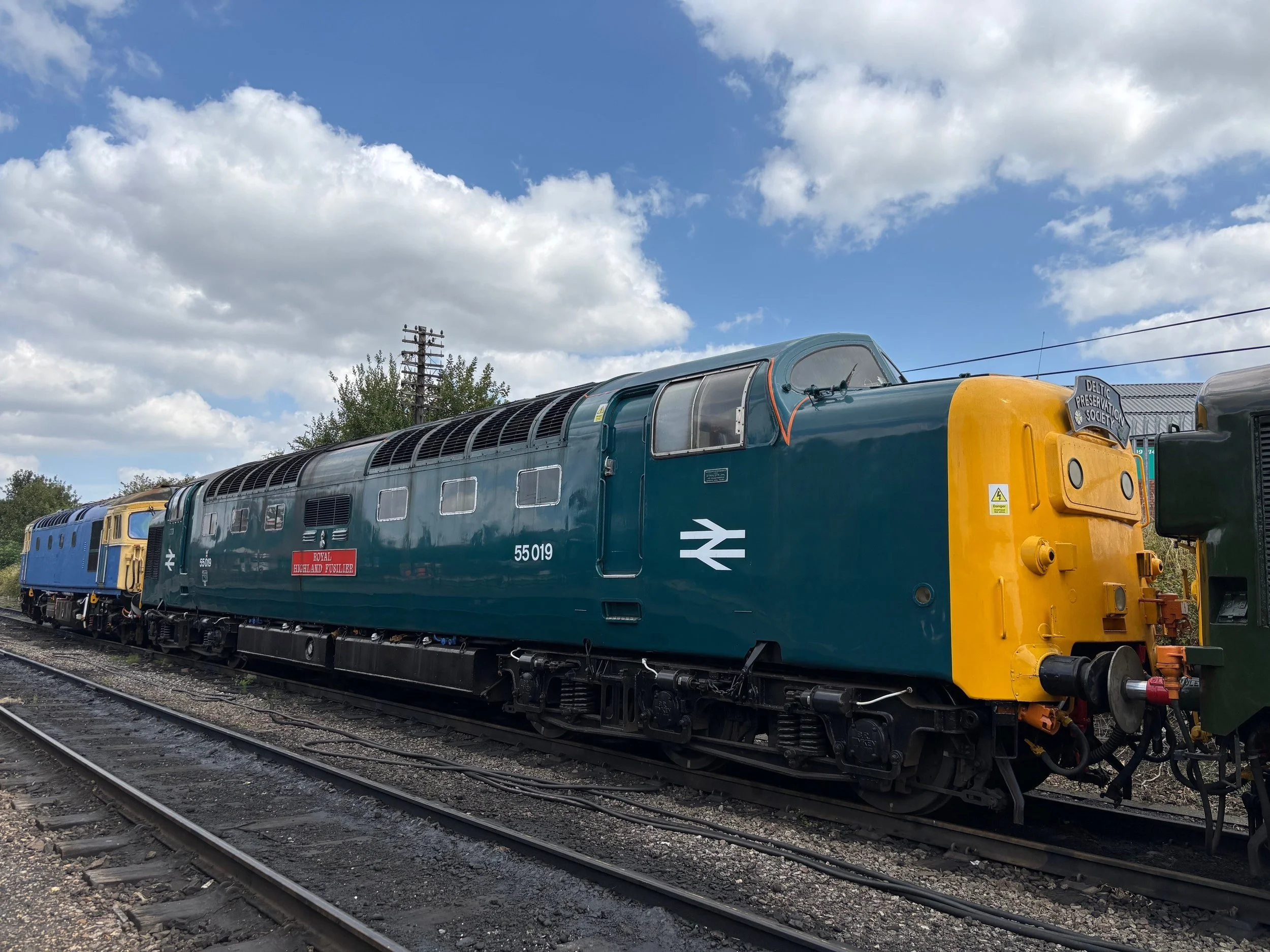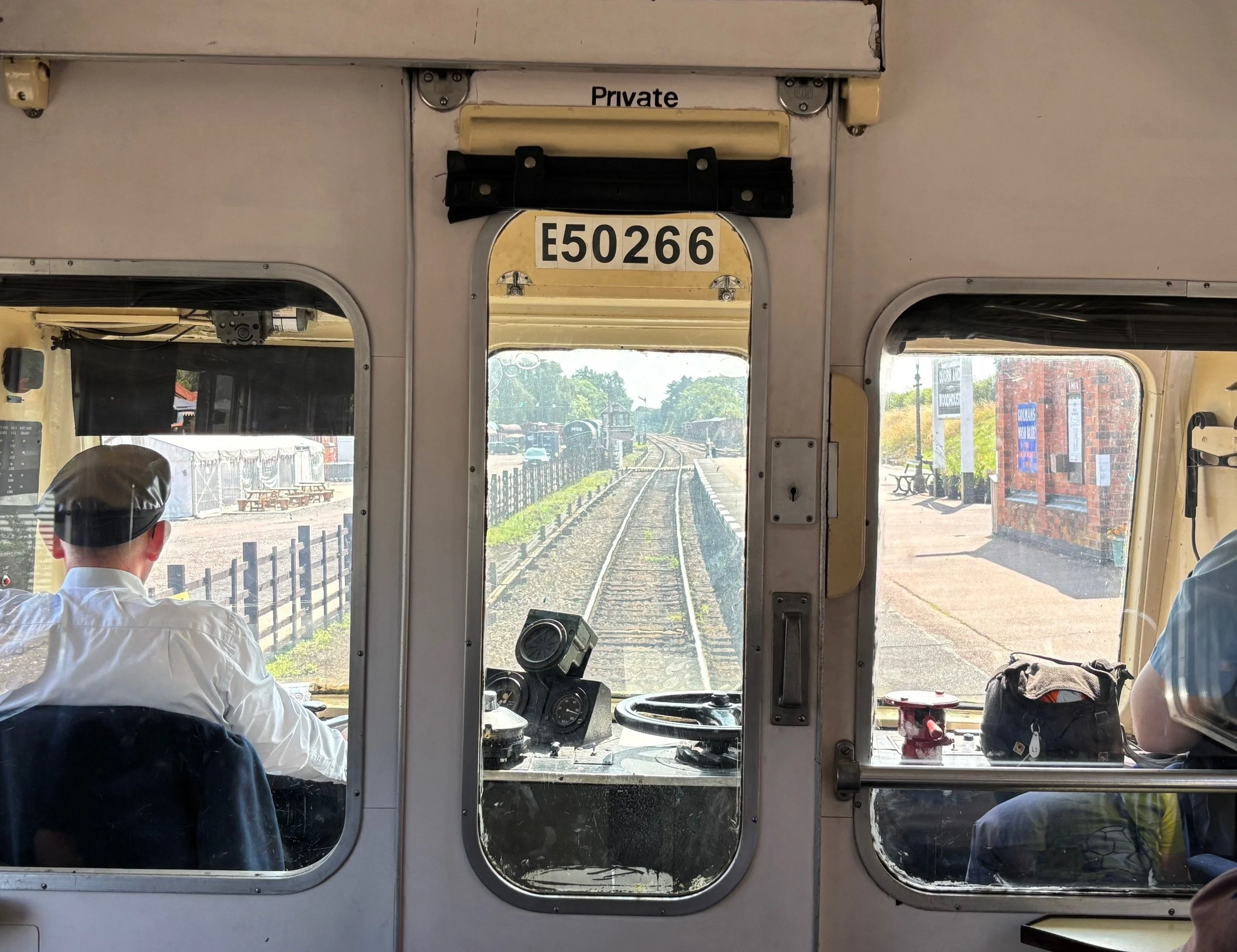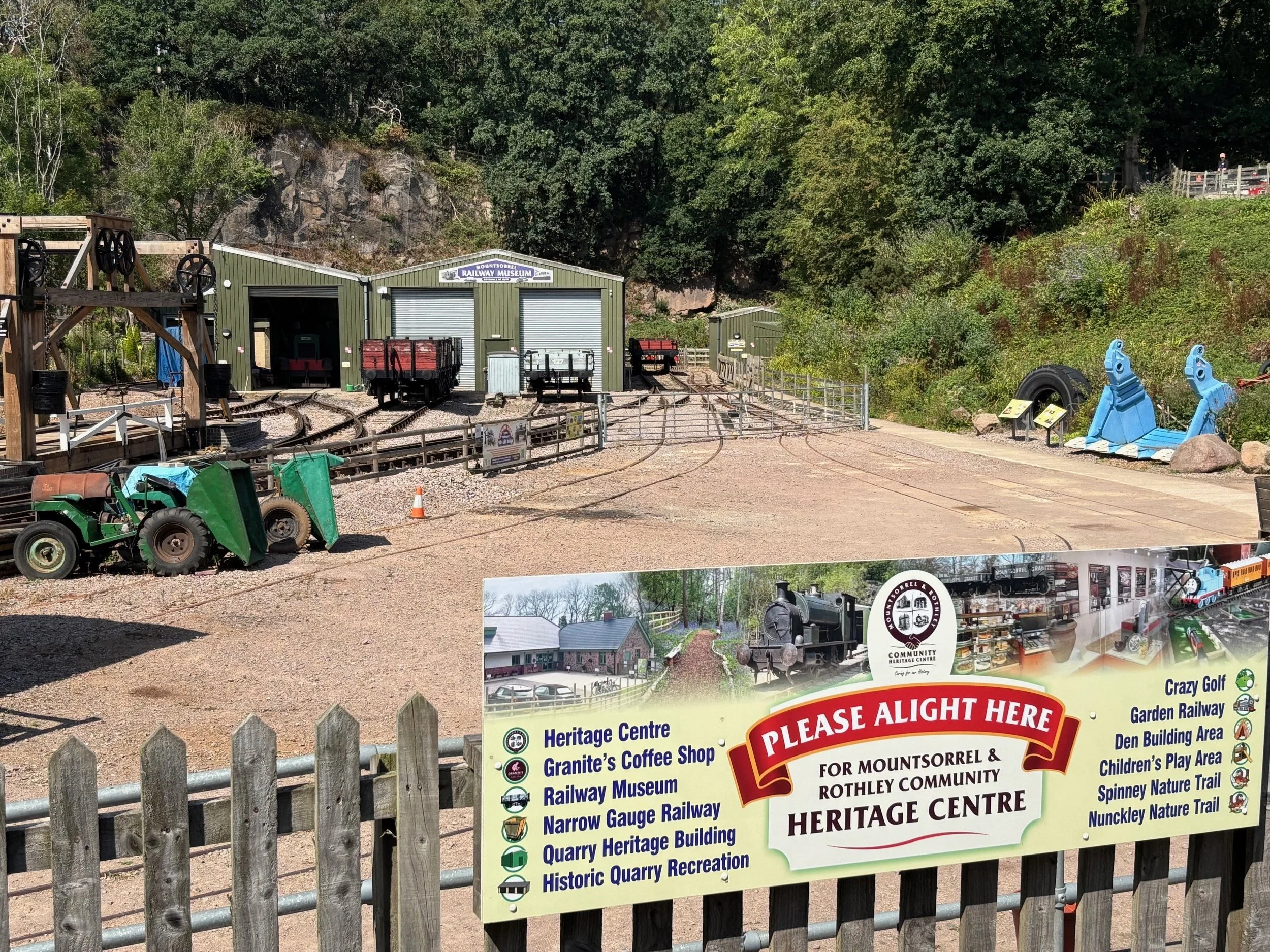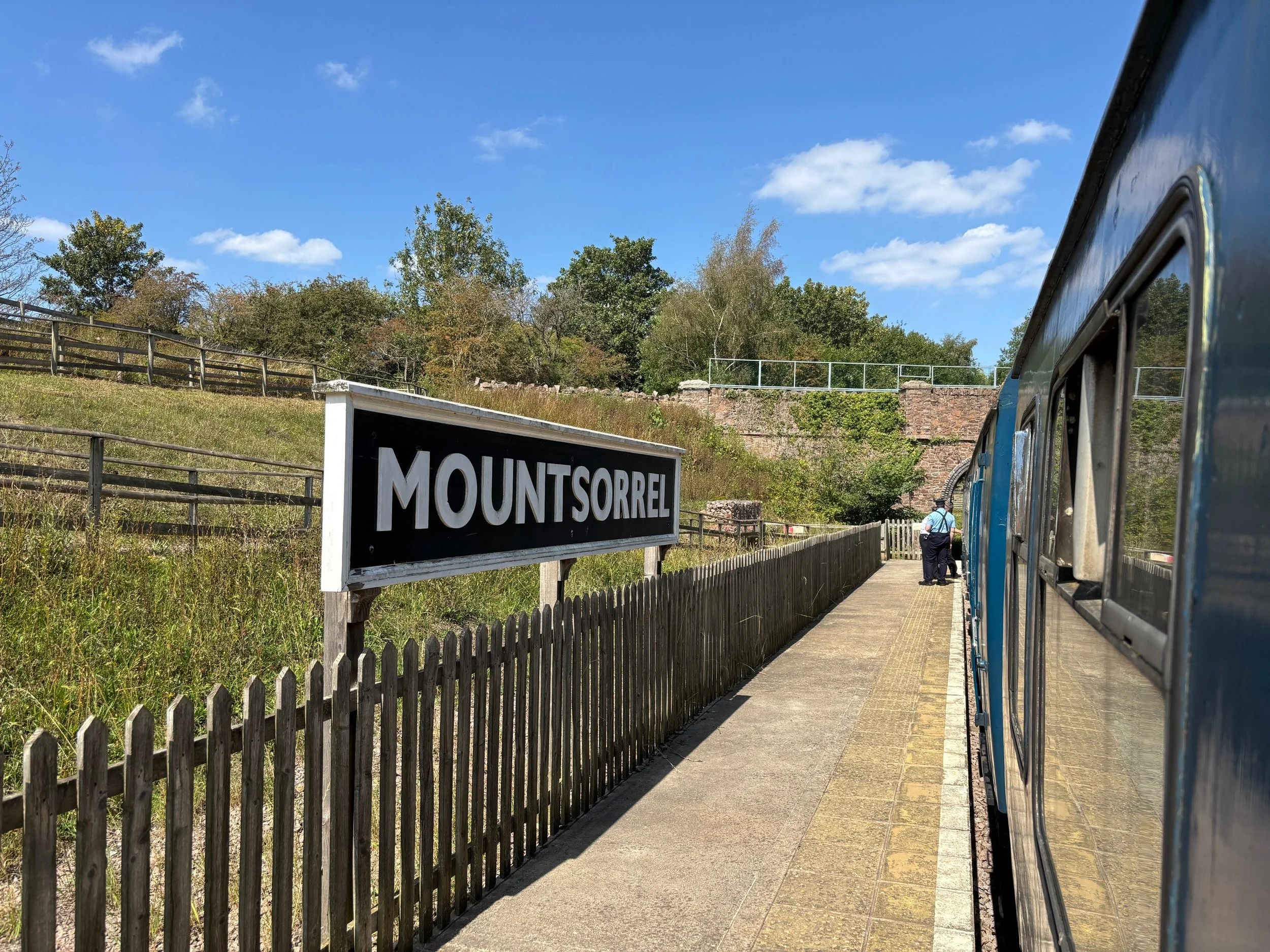Heritage Railways: The Great Central
On one of my occasional visits to preserved lines, I visit the Great Central Railway in Leicestershire and sample steam train plus DMU rides between Loughborough and Leicester North.
Entrance to Loughborough Central Station, headquarters of the Great Central Railway.
Opened in 1899 on the GCR’s line from Nottingham to London Marylebone, the station has been restored to the style of the 1950s.
Great Central Railway: Overview
The GCR is an 8 mile heritage line between Loughborough and Leicester North with suitably restored stations, signalling, locomotives and rolling stock.
Its main base, where I began my tour, is at Loughborough Central Station. The ticket hall is in a building on the bridge above the main island platform with two faces. The extensive station buildings at platform level include a museum, shop, buffet, emporium, waiting rooms and toilets. Off the north end of the platform, there is a picnic area between the tracks, with a path leading to the signal box and loco shed, both of which can be viewed but not accessed.
British Railways Class 2MT 78019 being prepared for service outside Loughborough Loco Shed on the day of my visit, with classmate 78018 alongside.
78019 was built in 1954 at Darlington North Road Works as a mixed traffic loco for light freight and passenger trains. Withdrawn in 1966, it was rescued from Barry Scrapyard and eventually came to the GCR in 1998.
Great Central Railway: History
The original Great Central Railway was formed in 1897, when the Manchester, Sheffield and Lincolnshire Railway changed its name in anticipation of the opening of its extension to London Marylebone in 1899. At the 1923 grouping, the company became part of the LNER and at nationalisation in 1948 it was initially part of the Eastern Region of British Railways, but was later transferred to the London Midland Region.
Express services from London to destinations beyond Nottingham were withdrawn in 1960. The section between Aylesbury and Rugby closed in 1966, with a DMU service remaining between Rugby and Nottingham until withdrawal in 1969.
A preservation society had been formed in the late 60s and received a lease on Loughborough Central Station in 1970, which was later extended to the yard complex and trackbed. Great Central Railway (1976) PLC was formed to purchase the land and track, supported by a charitable trust.
Passenger trains began running again in 1973 to Quorn & Woodhouse, with services later extended to Rothley and finally to Belgrave & Birstall (replaced by a new station called Leicester North) in 1990. A branch over part of a former industrial line to Mountsorrel Quarry was added in 2015.
Meanwhile, a separate heritage railway known as the Great Central Railway (Nottingham) exists over the northern part of the line between Ruddington (on the outskirts of Nottingham) and a point just north of Loughborough. There are plans to reconnect the two lines, which are described at the end of this article.
The small museum on Loughborough Central Station contains various signs, posters and other artifacts depicting the history of the line, some of which are seen here.
Whilst the display shows British Railways enamel signs for Loughborough Central and Leicester Central, today’s southern terminus of the GCR is at Leicester North (on the site of the former Belgrave & Birstall Station).
Historical posters appear on the platform billboards, such as this British Railways era example depicting the delights of nearby Nottinghamshire.
Some artistic licence has clearly been employed here, as visitors to Sherwood Forest would be unlikely to encounter Robin Hood!
Steam Locos
There are many steam locomotives based at the GCR, some in service whilst others are being restored or repaired. Two BR “Standards” were in operation on the day of my visit, but there are others together with examples of Great Central, GWR, LMS and Southern Railways. Visiting locos add to the variety on offer.
British Railways Standard Class 5 loco 73156 simmers in Platform 2 at Loughborough Central. It was at the front of a Pullman service offering full dining for customers who paid extra for the privilege.
This engine was built at Doncaster in 1956 and withdrawn after a short service life in 1967. Sent to Barry Scrapyard, it was rescued in 1986 and originally preserved at the East Lancs Railway before moving here.
Class 2MT 78019 again, but now at the head of the 10.30 service in Platform 1 at Loughborough Central.
This is the train I rode from here to Leicester North and back - details in the text.
Steam Ride: Loughborough to Leicester North (& back)
I joined the 10.30 departure from Loughborough Central behind Class 2MT 78019, taking my seat in an open Mark I BR carriage. With deep comfy seats, table and excellent window views, so much better than most of today’s rolling stock! This was the first southbound steam service of the day and was not that busy compared with departures later in the day.
We left bang on time with the blowing of the guard’s whistle and waving of his green flag, before gliding out of the station to the accelerating “chuff chuff” of our locomotive, always a very pleasant sound on the ears. Passing under the station road bridge, we entered the double track section, unique on British preserved lines, as we passed various diesel units and rolling stock on the sidings to our right and the large factory on the left which was once the home of Ladybird Books and now used for wallpaper production. Passing under further bridges and with back gardens of housing plus new developments, we left Loughborough and entered open country with farmland where combine harvesters were in action.
The first stop is Quorn & Woodhouse station, built on the classic GCR “island” model, but much smaller than Loughborough Central. The station is restored in 1940s style and has a NAAFI style tearoom under the bridge and the Butler Henderson Cafe in the yard. This reflects the wartime heritage when the site was much used by troops involved in preparation for “D Day” in 1944. Exchanging a few passengers, we were soon off again along an embankment with fields on each side. The next major feature is a bridge over Swithland Reservoir, which can be viewed on both sides with birds and other wildlife in evidence. This was followed by Swithland Sidings, where various preserved goods wagons were seen, together with a signal box. Running through a cutting, we then entered Rothley Station.
Rothley is built between two embankments and is also in the classic island style. There is a tearoom and a small museum giving the history of the line. In the adjoining yard, Ellis’s Tearoom is built in the former Goods Shed, with an adjacent picnic area. Our driver then accepted the token for the single track section onwards to Leicester North. After leaving the station, we passed the main Carriage Works of the railway, with numerous carriages and wagons in various stages of repair. Across more countryside along embankments and cuttings, before entering the Leicester suburbs.
Our train then passed under the bridge of the former Belgrave & Birstall station, before arriving into the single platform at the entirely new Leicester North station, which is built in traditional style. I alighted after a 30 min trip and used the facilities, before a quick look at the bookshop and acquiring supplies from the tearoom. Meanwhile, our loco was detached and moved forwards before reversing over a crossover to change ends on the train.
Rejoining the train in another carriage for the northbound 11.25 departure, we had another half hour’s run back via the reverse of our outbound route, slightly busier on this occasion as more visitors arrived. Between Rothley and Quorn, on the double track section, we passed BR Standard 5 loco 73156, which was heading a Pullman Train with diners in the opposite direction. I alighted back at Loughborough Central after a very pleasant trip!
Quorn & Woodhouse is the first station south of Loughborough on the line to Leicester North.
The station has been restored to its 1940s wartime condition due to being associated with military camps in the area ahead of D-Day.
The next station going south on the line is Rothley, which has largely been restored to pre WW1 condition.
Lighting in all buildings and on the platform is provided by restored gas lamps, an example of which is visible in this picture.
An action shot at Rothley, showing the 10.50 departure to Leicester North, as the guard blows his whistle and waves his green flag to give the “Right Away” to the driver, in time-honoured fashion.
This is a typical example of the smaller stations on the GCR, which were constructed with narrow buildings on an island platform.
Loco 78019 has arrived at the Leicester North terminus and prepares to uncouple before moving forward then reversing over the crossover to move to the other end of the train for the next service.
Leicester North is an entirely new station built during the preservation era, but in traditional style. This is close to the site of the former Belgrave & Birstall Station, which was on an island site to the right and slightly north of the present platform.
Diesel Locomotives & Multiple Units
As with the steam locos, the diesels feature a mixture that are operational or undergoing repairs and maintenance. Classes represented include 08, 10, 20, 25, 27, 31, 33, 37, 45, 47 and 50. Others visit the line, including a Class 55 Deltic, which was in the sidings but not in service when I was there.
Turning to DMUs, a Class 101 set was out to play during my visit, with others in the sidings in various states of repair, including a couple of more recent Class 153s.
Owned by the Deltic Preservation Society, 55019 “Royal Highland Fusilier” is seen in the sidings at Loughborough Central. The loco regularly visits heritage railways for gala events.
The fleet of 22 Deltics entered service on the East Coast Main Line in 1961-2 replacing steam locos. They ran until 1980-1 when they were in turn replaced by HSTs.
DMU Ride: Loughborough to Leicester North via Mountsorrel (& back to Loughborough)
After a lunch break in the picnic area, I boarded a Class 101 DMU from the 1950s on the 13.30 departure to enjoy a ride on what was my favourite form of traction from the 60s to the 80s. I took my habitual seat at the front behind the driver, in the deep cushions of the 1st Class section, with forward views through the glazed driver’s compartment. This recalled rides back in the 80s, when I rode many DMUs over various branch lines all over the country, together with more recent journeys on preserved lines such as the North Norfolk and Llangollen Railways.
This trip was different though, in that it involved a ride over the Mountsorrel branch of the line, which I had not travelled on before and was reopened in 2015, over part of a former industrial line between Swithland and Barrow-upon-Soar, which served various granite quarries. Arriving at Swithland Sidings box, our driver accepted the token for the single track branch, before changing ends and then proceeding in the reverse direction onto the branch line itself. Limited speed as we made our way through countryside and through a “green tunnel” of trees to the first stop at Nunckley Hill, where it is possible to alight to visit a historic quarry reconstruction and other attractions. Continuing on, it was a short distance through the woods to the terminus at Mountsorrel, just short of the original main quarry site.
Changing ends again, our driver soon had us on our way back over the attractive little branch back to Swithland Sidings, where the token was surrendered to the signalman. Then out onto the main line, for the continuation south to Leicester North. Just short of an hour for the trip.
The return run at 14.35 was direct along the main line, enabling another forward view from the other end of the train, this time in the more cramped 2nd class seats. We were held briefly on approach to Loughborough to allow 73156 to depart Platform 1 with another Pullman service, before we made our way into the station. Another great experience and reliving of former times!
The forward view through the front windows of Class 101 DMU car E50266 as the train arrives into Quorn & Woodhouse Station.
This was the classic sight so popular with many passengers, sadly no longer possible on equivalent modern rolling stock.
View from the DMU at Nunckley Hill Station on the Mountsorrel branch of the GCR.
The various attractions available here are listed on the board.
The crew prepare to change ends on the DMU at Mountsorrel Station, terminus of the GCR branch line.
Originally part of an industrial line serving Mountsorrel Quarry, the line closed in the 1950s but was rebuilt between Swithland Sidings and this point by volunteers, reopening in 2015.
The Class 101 DMU comprising vehicles 50203 & 50266 back at Loughborough Central after my return ride to Leicester North via Mountsorrel.
Built by Metropolitan Cammell in the 1950s, these vehicles have been at the GCR since 2003 and are presented in BR blue.
Looking to the Future… Great Central Railway Expansion
To end, a look at future plans for the GCR. The big project at the moment is “Reunification”, involving reconnecting the two halves of the railway and creating an 18 mile heritage line.
So far, with help from public donations and a grant from Leicestershire Enterprise Partnership, the following has been achieved:
Building of a new bridge over the Midland Main Line at Loughborough to carry GCR trains.
Refurbishment of an original GCR bridge built in the 1890s over the Grand Union Canal.
Replacement of another bridge over the A60 road, laying of track over it and adding a connection to Network Rail.
Investment in design work, the successful planning process and a start on the Transport & Works Act Order for the new line.
The next steps are:
Moving the loco shed to the side of the existing site to allow the tracks to continue north from Loughborough Central.
Ground investigation work on the sections of trackbed to be reinstated.
Building an “urban viaduct” made of concrete, north from the canal bridge across a flood plain.
Construction of Railway Terrace road bridge and Factory Car Park crossing.
Raising and repairing the embankment on the north side of the main line.
£5m has already been invested and there is another £2.5m in the kitty, but more is needed. The Project Board estimate that from signing contracts to opening day could be as little as 3 years. An exciting prospect!
Watton
Diagram within the leaflet explaining progress on reconnecting the two parts of the GCR, showing the existing track and stations, plus details of construction work remaining to be done.
Planning Permission to proceed with the remaining pieces of the reunification project was granted in June 2025. Project funds stand at £2.5m, but more is required.


